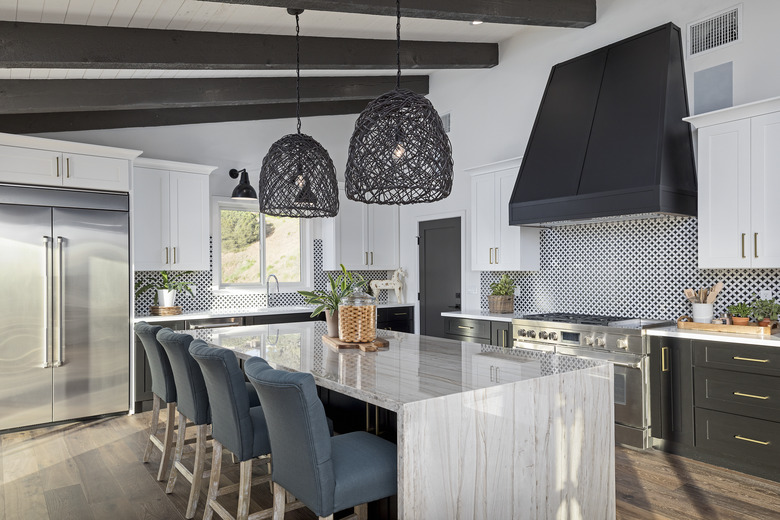How Much Amperage Does A Fridge Use?
Today's kitchen has more gadgets and appliances than ever before. It's the home cook's dream, with everything from air fryers to automatic pressure cookers. But with all that power comes the need for serious juice, and if you're designing a kitchen, it's important to start with the must-haves, then distribute power supply accordingly. And none of that great cooking would happen unless refrigerator power usage is made a priority so food stays safe and fresh.
Start Up vs. Running
Start Up vs. Running
When you first plug a fridge in, it uses considerably more power. The appliance, after all, is in its firing-up phase, with all systems running. But the refrigerator doesn't only consume a lot of power you plug it in. This also happens when you stand in front of the fridge, distracted with the door open, staring at the contents with a head full of indecision.
Once optimal temperature is reached, the refrigerator spends its life responding to open doors or sustaining the running temperature during an inactive night. Those scenarios impact the amount of energy being consumed by the appliance.
But the running draw isn't what you have to budget for with power allocation in the kitchen. The start-up phase may be infrequent, but it's the minimum you can budget for. And the magic number behind the start-up amps and watts your fridge need for starting up is triple the running power.
Refrigerator Power Usage
Refrigerator Power Usage
To know what your model's power needs are, you'll need to investigate by looking for the manufacturer's sticker on your appliance. This will list everything from the name of the maker through to the amps you'll need to run the fridge.
Generally, a fridge uses about 6 or 7 amps, but triple that for the start-up surge, so a dedicated power outlet with 15 to 20 amps is required for a fridge. It should be the sole appliance plugged into that outlet.
Once you know the refrigerator amps and volts, you can figure out the watts. To get the watts, you would multiple the volts by the amps. With this knowledge, you can check out the Energy Star "Flip Your Fridge" Calculator to see how much you'll save on energy by buying a more energy-efficient fridge. After all, the refrigerator uses about 13 percent of your home's daily power consumption, so the better its efficiency, the cheaper it is to run your home.
Tips for Energy-Efficient Fridges
Tips for Energy-Efficient Fridges
Generally, a freezer-top fridge uses the running power of a 60-watt light bulb and can save you hundreds of dollars per year in power costs.
Never put a fridge or freezer near a heat source, and always keep it out of the sun. Ambient temperatures will impact a fridge's efficiency if it gets too warm or too cold. The more consistent the climate is in your kitchen, the better the running costs will be for your fridge.
Obviously, the bigger the fridge, the bigger the power draw. The best size for an energy-efficient household is 16 to 20 cubic feet. But keep in mind that add-on features like ice makers and water dispensers make a fridge less efficient.
Always keep your freezer around 75 percent full so the appliance isn't trying to keep a cavernous empty space cool. Every time you open the fridge door, that excess of air floods out and warm air pushes in, requiring an aggressive "start-up" cooling cycle to happen yet again.
